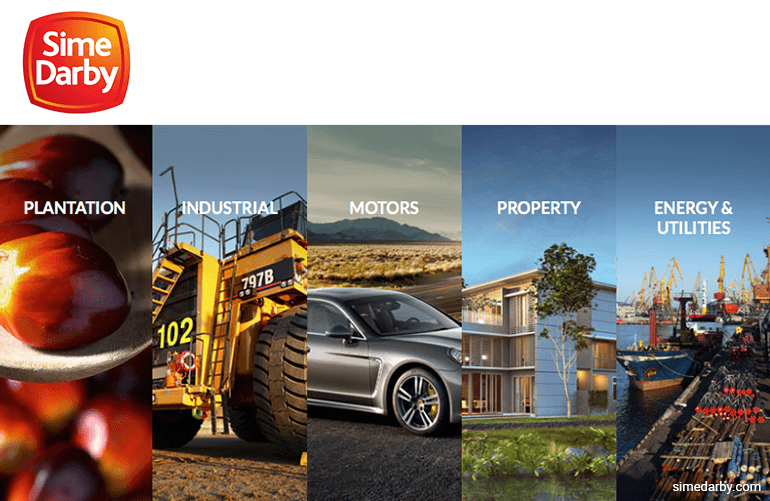
BY end-November, it would have been 10 years since the RM31 billion mega merger that gave birth to the enlarged Sime Darby Bhd today.
It was aimed at creating the world’s largest listed oil palm group, creating an entity that would — at the time — have a total revenue of RM26 billion, a workforce in excess of 100,000 and 600,000ha of plantation land across Malaysia and Indonesia.
To recap, the massive corporate exercise merged eight listed entities — Sime Darby, Kumpulan Guthrie Bhd and Golden Hope Plantations Bhd group of companies — all of which had one common substantial shareholder: Permodalan Nasional Bhd (PNB).
The merger also triggered a mandatory general offer for Golden Hope’s unit Negara Properties Bhd.
The mega merger was proposed by CIMB Investment Bank Bhd. It was seen as a landmark deal for Datuk Seri Nazir Razak, who was then CEO of CIMB Group Bhd.
The entities were brought together under a special purpose vehicle, Synergy Drive Sdn Bhd, and the merger exercise was completed in January 2007.
In November 2007, the merged entity was renamed Sime Darby Bhd and relisted on Bursa Malaysia with a valuation of RM59.5 billion — an 80% improvement from its collective value of RM31.6 billion at the start of the merger process.
The new behemoth would have boasted an output of 2.5 million tonnes of palm oil at the time, or roughly 6% of global production then. Nazir believed that there would be significant cost and revenue synergies to be obtained via the merger, principally from plantations and property but not limited to the two divisions.
So, has the merger achieved synergy drive a decade later?
When the merger was done, the plantation business was riding a crude palm oil (CPO) price boom.
From RM1,600 a tonne when the exercise was proposed, the price subsequently climbed to RM4,321 in March 2008. However, prices then headed downhill after the commodity boom ended. CPO prices have not exceeded RM3,000 a tonne since July 2012.
A decade on, however, critics say the plantation business has not realised its full potential. For example, its fresh fruit bunches (FFB) per mature hectare stood at 20.26 metric tons (MT) in Malaysia and 15.5 MT in Indonesia in the financial year ended June 30, 2016 (FY2016).
Sime Darby’s data shows that FFB yield per hectare for its Malaysian estates declined recently after staying between 22 MT and 22.87 MT between FY2009 and FY2015. In FY2008, the figure was higher at 23.6 per hectare.
In the meantime, for its Indonesian estates, FFB yield per hectare has declined over the past three years from 20.21 MT in FY2013. Prior to that year, the figure had yo-yoed on an annual basis from 18.67 MT in FY2008.
On an overall basis, Sime Darby’s total FFB yield per mature hectare worldwide in FY2016 was 18.82 MT, which is not yet best in class.
To be fair, however, there may be a number of factors at play, including age profile and geographical differences; the latter would also mean different weather patterns that would affect production.
IOI Corp Bhd, for instance, reported a FBB yield of 21.41 MT per hectare in FY2016 ended June 30.
Kuala Lumpur Kepong Bhd’s (KLK) FFB yield for the financial year ended Sept 30, 2015 (FY2015), was 21.96 MT per hectare.
That said, the two plantation groups have also seen volatility in terms of annual FFB yields amid an industry-wide decline in production.
The property segment of Sime Darby has also been criticised for perceived underperformance, given its potential as the largest listed Malaysian developer by land bank, with about 28,000 acres.
As a benchmark, UEM Sunrise Bhd with roughly 10,990 acres has the second largest land bank, followed by IOI Properties Group with about 10,000 acres.
For perspective, when the merger was proposed, the touted benefits included lower cost of capital from a bigger, stronger balance sheet as well potential support from the plantation unit for property in terms of available land bank for injection.
However, some quarters believe the property division has not been aggressive enough in leveraging this strength. Despite its land bank, the property arm is lower down the food chain when it comes to sales.
Another criticism against the property division is its joint ventures with much smaller players in the past. While some of its partners had been notable players such as UEM Sunrise and Eastern & Oriental Bhd, there have been eyebrow-raising names that include Brunsfeld group and CapitaMalls Asia Ltd.
For FY2016, its full-year gross property sales came in at RM1.73 billion while unbilled sales stood at RM1.3 billion. In comparison, S P Setia Bhd chalked up RM4.3 billion in property sales for FY2015 ended Oct 31, with RM9.2 billion in unbilled sales. It has roughly 3,900 acres of undeveloped land bank.
Other major listed developers also boast considerably larger pipelines despite working with smaller land banks. As at May 2016, Mah Sing Group Bhd had RM4.8 billion in unbilled sales, while UEM Sunrise had RM4.3 billion as at June 30. Eco World Development Group Bhd reported RM4.7 billion in unbilled sales as at August.
Sime Darby Property’s trailing 12-month revenue totalled RM2.86 billion. This puts it in fourth place among the purer property players on the Kuala Lumpur Property Index. S P Setia leads the pack with revenue of RM4.97 billion, followed by Sunway Bhd with RM4.57 billion.
All said, has the merger delivered on its major objectives as outlined in 2006? The short answer may be that the critical mass has proved useful, but much potential synergy seems to have remained unrealised.
Save by subscribing to us for your print and/or digital copy.
P/S: The Edge is also available on Apple's AppStore and Androids' Google Play.